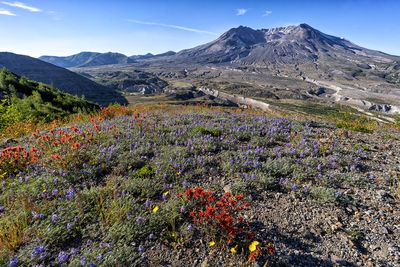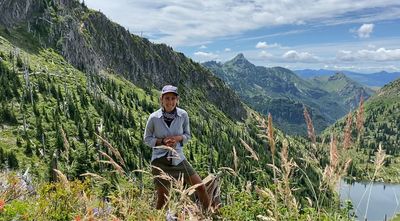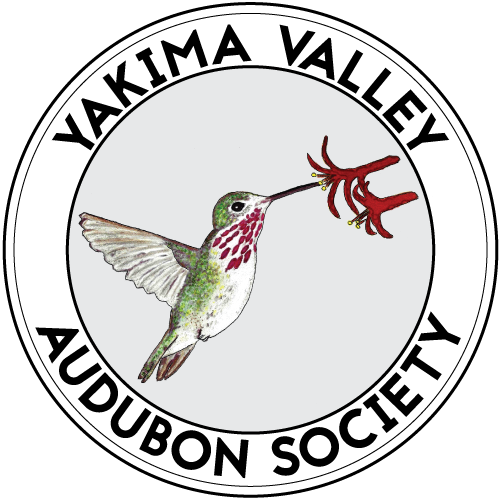Bird's Eye View - Living with volcanoes in the Pacific Northwest | How these volcanoes create unique and changing habitat for birds | Gina Roberti | March 2022 | YVAS Program
General ·Bird’s Eye View: Living with volcanoes in the Pacific Northwest How these volcanoes create unique and changing habitat for birds with Gina RobertiOn May 18, 1980, a cataclysmic event occurred at Mount St. Helens as the north flank of the volcano slid off in one of the largest landslides in recorded history, unleashing a powerful eruption. This eruption buried 230 square miles of existing old-growth forest with hundreds of feet of volcanic debris. In some places closest to the crater of the volcano, almost no living organisms survived. Ash from the eruption blew across the United States and megatons of logs and volcanic debris clogged up rivers, lakes and streams. The eruption dramatically reshaped the landscape, creating a mosaic of habitat types that are now home to a diverse suite of birds. Using satellite images and aerial photography, we will make observations of the major stratovolcanoes of the Cascades range and learn what to observe in the rock record that gives evidence of past eruptive processes. We will learn why the volcanoes in the Cascades produce certain types of landforms and distinct disturbance zones. Finally, we will discuss how birds make a home in landscapes shaped by volcanic disturbance. Join us as we tour the diverse mosaic of habitats created by the 1980 eruption and learn about where to see some of Mount St. Helen’s signature birds. This interactive presentation will excite and prepare you for birdwatching in the Mount St. Helens National Volcanic Monument. Bring your questions and curiosities! Gina Roberti is a geologist, naturalist and educator who grew up digging quahogs and exploring the shorelines of the Narragansett Bay in Rhode Island amidst ancient metamorphic rocks of the Appalachian Mountains. Since graduating from Brown University with a degree in Geology-Biology, Gina spent several years working as a geoscience educator in various geologic regions in the western U.S., including the Colorado Plateau, Snake River Plain, Klamath-Siskiyou, North Cascades, and presently the active Cascade volcanic range. In each of these places she taught thousands of youth and adults about earth science in a variety of field-based and classroom settings. Gina currently works with the Mount St. Helens Institute. She strongly believes in the power of education to inspire awareness, appreciation and stewardship for the natural world. When Gina is not working she can be found on long walks or cross country skis, often in the company of birds.
Posted by Yakima Valley Audubon Society on Wednesday, March 30, 2022

On May 18, 1980, a cataclysmic event occurred at Mount St. Helens as the north flank of the volcano slid off in one of the largest landslides in recorded history, unleashing a powerful eruption. This eruption buried 230 square miles of existing old-growth forest with hundreds of feet of volcanic debris. In some places closest to the crater of the volcano, almost no living organisms survived. Ash from the eruption blew across the United States and megatons of logs and volcanic debris clogged up rivers, lakes and streams. The eruption dramatically reshaped the landscape, creating a mosaic of habitat types that are now home to a diverse suite of birds.
Using satellite images and aerial photography, we will make observations of the major stratovolcanoes of the Cascades range and learn what to observe in the rock record that gives evidence of past eruptive processes. We will learn why the volcanoes in the Cascades produce certain types of landforms and distinct disturbance zones. Finally, we will discuss how birds make a home in landscapes shaped by volcanic disturbance.
Join us as we tour the diverse mosaic of habitats created by the 1980 eruption and learn about where to see some of Mount St. Helen’s signature birds. This interactive presentation will excite and prepare you for birdwatching in the Mount St. Helens National Volcanic Monument. Bring your questions and curiosities!

Gina Roberti is a geologist, naturalist and educator who grew up digging quahogs and exploring the shorelines of the Narragansett Bay in Rhode Island amidst ancient metamorphic rocks of the Appalachian Mountains. Since graduating from Brown University with a degree in Geology-Biology, Gina spent several years working as a geoscience educator in various geologic regions in the western U.S., including the Colorado Plateau, Snake River Plain, Klamath-Siskiyou, North Cascades, and presently the active Cascade volcanic range. In each of these places she taught thousands of youth and adults about earth science in a variety of field-based and classroom settings.
Gina currently works with the Mount St. Helens Institute. She strongly believes in the power of education to inspire awareness, appreciation and stewardship for the natural world. When Gina is not working she can be found on long walks or cross country skis, often in the company of birds.
